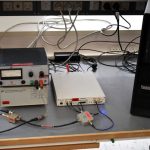Improved GNSS Receiver for Forestry
The European Space Agency (ESA)-funded SRX project (‘SW-Defined Receiver for eXact PNT’) has developed a prototype multi-frequency, multi-GNSS receiver offering high-precision positioning and heading capability in adverse signal environments like forests.
By Peter Gutierrez













